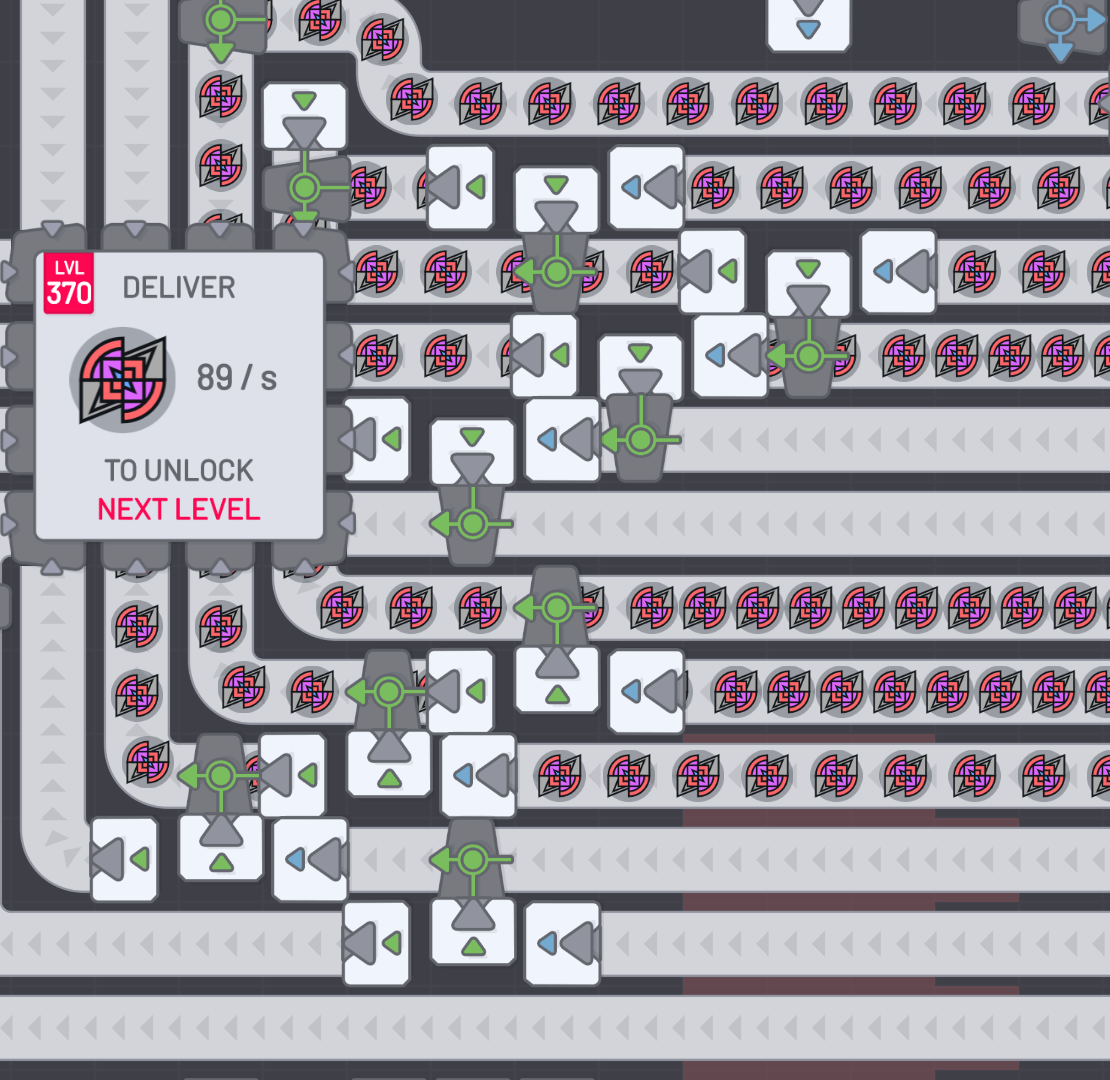Overview
I’ve made the most compact factory for producing any end-game shapes that I can find anywhere. Although compactness doesn’t really help much in an infinite world Its good for keeping lag to a minimum and producing shapes as fast as possible because all the parts are closer together. This isn’t the fastest I’ve seen but it can complete a 200 shape-per-second level in about 4 minutes using 2 identical factories. Adding more and more factories will probably slow my game down more than the speed they’ll add but even 1 factory will complete a level in 5 minutes. Like most factories, I use a buffer to store items and release them at the right time at increase the per-second amount. At the same time I use all 16 hub inputs for tier upgrade shapes when the buffer is filling up to slowly make the factory faster. Unlike my older factories, the inputs for this are full shapes, 4 belts of each, and 2 belts of each colour. check out my guide on my old factories before wires to see how they’ve evolved over time: https://steamcommunity.com/sharedfiles/filedetails/?id=2207930168https://steamcommunity.com/sharedfiles/filedetails/?id=2266775008https://steamcommunity.com/sharedfiles/filedetails/?id=2262618423https://steamcommunity.com/sharedfiles/filedetails/?id=2246043417
Full Factory

Factory Explanation

Layer detector logic (Pink)
This little circuit unstacks the input and gives a different output depending on whether the shape is 2, 3 or 4 layers. If its 4 layers, it just lets the input through normally into the main unstacker logic. If its 3 layers it skips the first layer of the unstacker logic. If its 2 layers it lets it though normally and it skips the first 2 and puts it in again so you can get double the output.
Unstacker Logic (Red on wiring picture)
This is pretty simple. It sequentially unstacks the top layer and send the rest on to the next one. Each corner of that top layer gets analysed by rotating it round each time and then the colour and shape outputs get sent off to the colour mixer, shape selection and missing corner detection.
Missing Corner detection(Black/Dark Blue)
Super simple. Checks if 2 adjacent corners both have shape outputs, if not it opens a gate which reroutes the remaining corner to the next stacker array. The ‘corner distribution’ and missing corner rerouting is simply just spaghetti belts which takes the outputs of the cutters and move them into the right stacker arrays since the stackers don’t line up exactly with the cutters.
Tiny Colour Mixer (wiring in actual factory slightly different to fit around other parts)
Item Dumping
To speed up the creation of the new shape after the level changes I delete all the old colours and shape parts that are stuck in the painters and stacker arrays. When the shape changes a pulse is sent to start a timer which is just a shape moving around a conveyor line. signals from detectors are combined with ORs and sent to lines which open a bunch of trash filters (Purple). It’s a bit big because I made it before I discovered you could make T-Flip flops but it works fine as a 10+ second timer depending on the lag. Like I said its a pretty bad timer compared to others I’ve seen, like a binary counter, but it wouldn’t save any space to change it since its put in an empty space anyway.
Buffer







